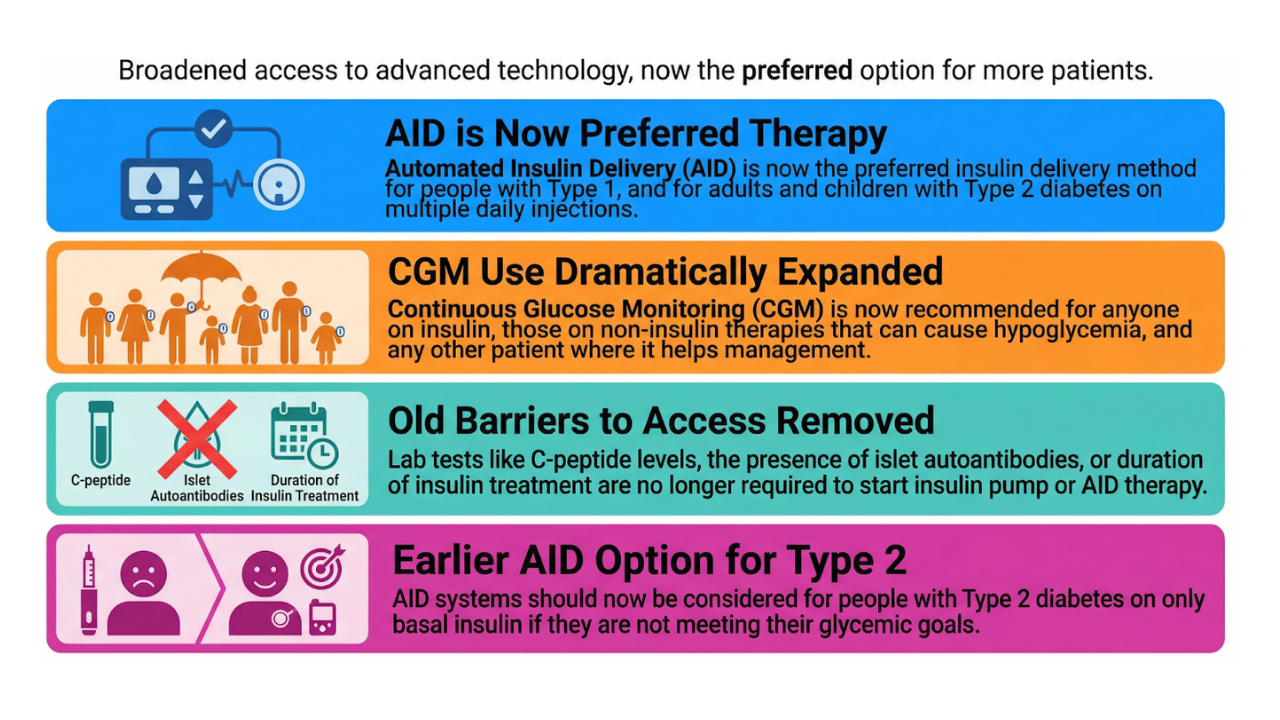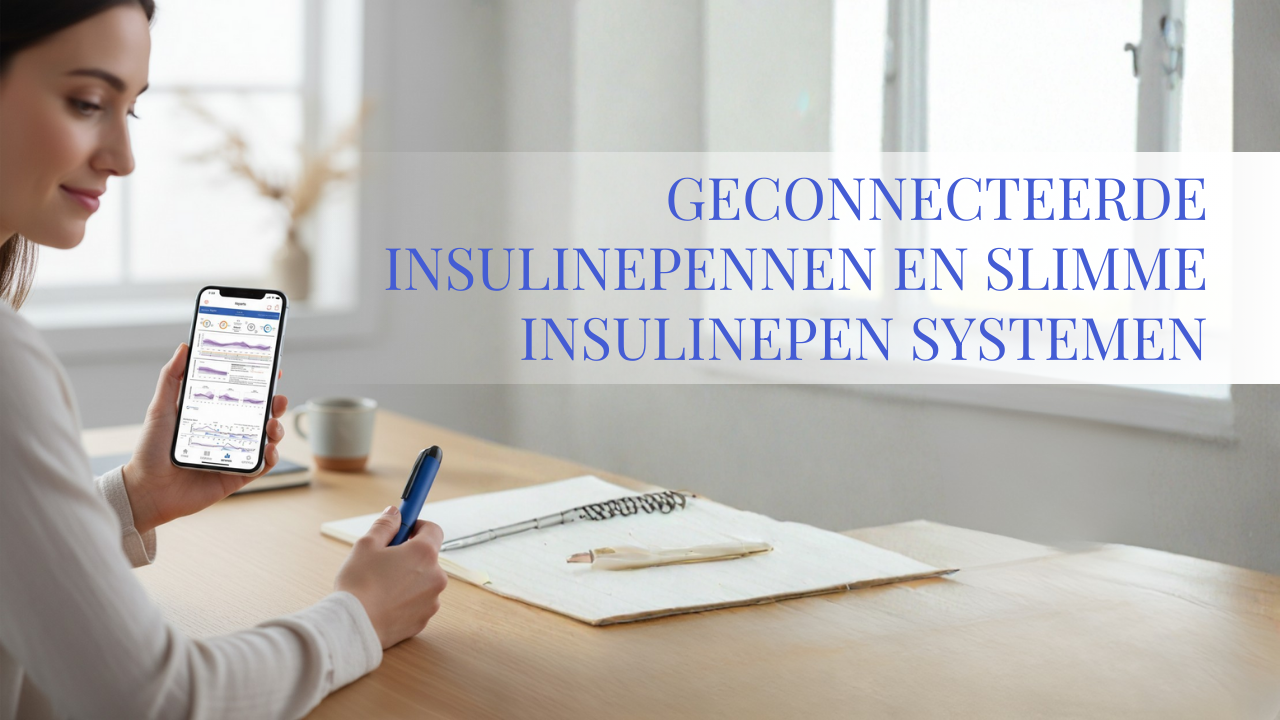Summer Updates on Diabetes Technology
Jun 05, 2024
In this blog, we'll explore the latest advancements in diabetes technology, covering
- automated insulin delivery systems,
- insulin pumps,
- glucose sensors,
- and insulin pens.
These updates are paving the way for a brighter future for those managing diabetes.
Soon, we'll be attending the American Diabetes Association conference, where we anticipate even more groundbreaking news.
Get Access To Updated Diabetes Technology Courses
Here's a look at the inspiring updates in diabetes tech that promise a hopeful future...
#1 Medtronic's Vision for the Future
Medtronic has unveiled ambitious plans for digital twin technology, which will enable automatic therapy updates on the MiniMed 780G.


Additionally, they are working on a combined sensor and infusion set, with even an all-in-one patch pump in their future pipeline.

And there are also rumors of an implantable insulin pump as Medtronic announced a collaboration with Arecor Therapeutics to develop temperature-stable insulin.
- Implantable insulin pumps with intraperitoneal insulin delivery represent a promising advancement in diabetes management. By mimicking the body's natural insulin delivery process, these pumps can improve glycemic control, reduce insulin resistance, and decrease the risk of hypoglycemia and other side effects. (Plos One 2021)
- Although there is currently no commercially available implantable insulin pump, Medtronic’s acquisition of intellectual property from the Alfred Mann Foundation in 2021 indicates significant progress towards making this innovative technology a reality.
#2 Smooth Launch of the Tandem Mobi Pump - now available with Dexcom G7

The Tandem Mobi pump's launch in the US has been smooth, with integration of the Dexcom G7 starting this month.
Tandem also plans to integrate Abbott’s FreeStyle Libre 3, promising even more options for users in the near future.
While there are no definite timelines for the Tandem Mobi pump's launch in Europe, it is expected to be available here somewhere in 2025. 👍
#3 Omnipod 5 Expands to France

This summer, Omnipod 5 will launch in France.
Last month, reimbursement was approved for all people with type 1 diabetes (aged 2 years and older) whose HbA1c is >8% despite intensive insulin treatment for six months.
With Omnipod 5 now available in Germany, the UK, the Netherlands, and France, Insulet states that the device is accessible to "the majority of their European customers"...
We hope Omnipod 5 will soon become available to the other 23 European countries as well. 🙏
#4 CamDiab's US Approval and YpsoMed's Future

CamDiab has received an FDA approval for its CamAPS FX algorithm, which is compatible with the DANA-RS, DANA-i, and mylife YpsoPump.
However, none of these insulin pumps have FDA approval at the moment.
The mylife YpsoPump has been submitted to the FDA, with plans for YpsoMed to commercialize the mylife Loop system in the US by the end of 2025.

YpsoMed recently announced they will split into YpsoMed AG and YpsoMed Diabetes Care AG, potentially selling their Diabetes Care business.
They will decide by the end of the year whether to invest in or sell the diabetes franchise.
Regardless, the mylife Loop system appears to have a future in the US.
#5 Beta Bionics and Xeris Partnership

Beta Bionics and Xeris have announced a collaboration to develop a unique glucagon formulation for the bi-hormonal iLet system.
- This ready-to-use glucagon does not require reconstitution, simplifying the management of the bi-hormonal system's usability.
- (Unlike the INREDA bi-hormonal AID system, which requires users to dissolve glucagon powder in liquid daily.)
The next step is a pivotal trial for the bi-hormonal iLet, which will now use Xeris' glucagon instead of Zealand's dasiglucagon, used in the phase 2 trial.
Although the pivotal trial for the iLet Duo has been postponed a few times, it is expected to start soon.
#6 Sequel's Twiist AID System
At the recent AACE meeting, it was mentioned that the new Twiist AID system is set for US commercialization by the end of 2024 for people with type 1 diabetes for ages 6 and up.
This new AID system combines
- the DEKA insulin pump,
- the Dexcom G6 sensor (with the goal to connect more sensors in the future),
- and the Tidepool Loop algorithm, controlled via your iPhone or your Apple Watch.
The twiist app (from Sequel) will be downloadable from the iOS store, and will look like the Tidepool Loop app.
(Sequel is working on a similar app for Android phones.)
The DEKA insulin pump is a modular semi-patch pump.
- It's called the twiist pump because it has 2 pieces, and you can twist it to open it.
- The top piece is reusable for up to 3 years: it holds the battery and the algorithm.
- The bottom piece is disposable and has the 300 U insulin reservoir and the infuson set.
The water resistent pump is worn on the body with a short tubing,
or you can use longer tubing to wear it in your pocket.
The system can work in absence of your phone, because the algorithm resides directly on the pump.
The pump also has a bolus-button on the pump.
The twiist pump has a novel insulin occlusion detection mechanism: an acoustic volume sensing (AVS)TM technology that precisely measures the volume delivered.
- At ENDO2024, dr Butterfield (Washington) presented an abstract that showed that the twiist pump can indeed detect air in the cannula
- and had the shortest occlusion detection time when comparing with the MiniMed pumps, Omnipod 5 and Tandem t:slim X2.
The Tidepool Loop algorithm is known as a former version of the open-source Loop algorithm for iPhones,
- so the twiist system will be the first commercial AID system that allows bolusing from your Apple Watch.
- The open-source Loop algorithm is also know to be a more customizable AID option with a broad "Correction Range" of 87-180 mg/dl (4.8-10 mmol/l).
- Loop has very specific meal announcement features, with food type emojis and a visual display of the active carbs in your body.
Please note: although Tidepool Loop is similar to open-source Loop 3.0 ("DIY Loop 3.0"), the functionalities in the commercial app will not be completely the same as those in the open-source app.
This is because Tidepool Loop can only offer the functionalities of the version submitted to the FDA in 2020.
- What will be included is the temporary target value for sports and before meals and the ability to enter carbohydrates in the past (in case you forgot)
- What will not be included is the overrides feature (to set a customisable temporary target or % of insulin release), and the "automatic bolus" feature (to deliver the basal insulin partially as a bolus).
However, an FDA-application is already being prepared to integrate these last 2 functions into Tidepool Loop as well, since they are very popular with the DIY Loop community.
Clearly, the open-source algorithms will always remain just a step ahead of the commercial and officially approved ones.
For those interested in this innovative AID system, we highly recommend this interview from Justin of Diabetech with Dr. Alan Lotvin, the CEO of Sequel Med Tech.
#7 New AID System Alert: neural-net artificial pancreas (NAP) algorithm

(Slide > dr Kovatchev @ATTD2024)
At ATTD2024, Dr. Boris Kovatchev from the University of Virginia (UVA) presented preliminary results from a novel AID system utilizing neural networks instead of the traditional model predictive control (MPC) algorithm.
While neural network-based AID systems are also being developed by companies like Omnia, this is the first time we have seen trial data from a true machine learning AID system.
The "neural-net artificial pancreas (NAP)" consists of the following components:
- Tandem t:AP research insulin pump
- Dexcom G6 sensor
- University of Virginia (UVA) AIDANET algorithm
The NAP algorithm, trained in silico on UVA’s MPC algorithm, can operate
- in both hybrid closed loop (requiring meal announcements)
- and fully closed loop modes (no meal announcements).
Notably, the NAP algorithm has "six-fold lower computational demands than the MPC."
In a randomized crossover study with 15 individuals with type 1 diabetes, the system achieved a Time in Range (TIR) of 86%. comparable to the traditional MPC algorithm.
This demonstrated that a neural network encoding of a complex MPC algorithm can perform similarly while requiring significantly less computational power.
Currently, the system is being tested in 36 people with type 1 diabetes at home in the Fully Closed Loop at Home (FCL@Home) study.
- Participants use the fully closed loop NAP algorithm for five days in a hotel setting,
- followed by seven days at home with 24/7 remote monitoring, with no standardization of meals and exercise.
Preliminary data from the first six participants showed a mean TIR of 72% at home and 74% in the hotel, slightly higher than the 68% TIR with standard care.
The fully closed loop NAP algorithm maintained lower glucose levels throughout the day compared to standard care, except around meals due to the absence of meal announcements.
Dr. Kovatchev noted that neural networks could improve TIR over time as they learn from an individual’s data.
These preliminary results are promising, particularly in reducing the burden of regular and accurate bolusing.
More extensive data on these algorithms is eagerly anticipated.
#8 Norwegian Success Story

The Norwegian Childhood Diabetes Registry reports impressive results, with over 90% of children now using automated insulin delivery (AID) systems.
This widespread adoption has significantly improved diabetes management, as evidenced by the average HbA1c dropping from 8.2% in 2013 to 7.2% in 2022, underscoring the transformative impact of cutting-edge diabetes technology on public health.
- Interestingly, the mean HbA1c remained relatively stable from 2013 to 2016, only decreasing slightly to 8.1% in 2016.
- However, from 2016 onwards, the mean HbA1c significantly declined to 7.2% by 2022. This substantial improvement coincides with a dramatic increase in continuous glucose monitor (CGM) usage, which rose from 34% in 2016 to 97% in 2022.
These figures highlight the crucial role of diabetes technology in achieving better glycemic control and improving health outcomes for children with diabetes.
#9 Roche's Accu-Chek SmartGuide CGM

At ATTD2024, Roche launched the Accu-Chek SmartGuide CGM, which features an AI-based predictive algorithm designed to prevent hypoglycemia.
This innovative technology aims to enhance user safety and improve glucose control.
The sensor has been submitted for CE marking for adults with type 1 or type 2 diabetes, and commercialization is anticipated by the end of 2024.

The Accu-Chek SmartGuide CGM offers three types of AI-driven glucose predictions:
- Glucose Predict Curve: Displays your predicted glucose levels for the upcoming 2 hours.
- Low Glucose Predict: Alerts you if hypoglycemia is predicted within the next 30 minutes.
- Night Low Predict: Indicates the risk of nighttime hypoglycemia in the next 7 hours.
To function effectively, the algorithm requires an internet connection
and performs better if users announce their meals and insulin doses.

(Image > https://www.diabettech.com/mdi/new-technologies-for-mdi-have-roche-and-medtronic-missed-a-trick/)
#10 Recommendations for Standardized AGP Profile for Connected Insulin Pens

Recently published by leading experts in the field, this report outlines standardized recommendations for Ambulatory Glucose Profile (AGP) reports tailored for connected insulin pens.
The first page of the report includes key features such as
- the Time in Range(s) bar,
- a summary of insulin and glucose metrics,
- the AGP curve,
- and detailed basal insulin assessment.
The essential insulin metrics highlighted by the panelists are
- Average total daily insulin dose and range
- Separate average daily doses of basal and bolus insulin
- Individualized percentages of the total daily dose
The basal-insulin section provides information on overnight hypoglycemia and potential over-basalization to healthcare providers.
- Neutral terminology, like “basal dose not given” instead of “basal dose missed,” is used to present the data in a less judgmental manner.

The second page contains bolus insulin assessment details,
- including meal timing,
- insulin-to-carb ratio,
- average bolus insulin dose,
- and the number of days with bolus doses recorded.
Daily glucose profiles, overlaid with basal and bolus insulin timing and dosing, help users and healthcare providers identify insulin stacking and understand insulin administration patterns.
The authors note that the AGP report for connected pens is expected to evolve, similar to the AGP report for CGM.
- For instance, the Time in Tight Range (TITR) metric may be included in future reports,
- especially for those who have already achieved the standard TIR target of >70% and would benefit from a tighter glucose range to guide clinical decision-making.
- The panel suggests that these modified targets should be adaptable in individual connected pen systems and reflected in a modified or separate report.
This standardized approach will help healthcare providers and patients better understand and manage insulin dosing, improving overall diabetes management.
Conclusion - Looking Forward to #ADA2024
As we gear up for the upcoming American Diabetes Association conference, our excitement and hope for the future of diabetes technology are stronger than ever.
These updates not only showcase the significant progress made but also inspire us to continue striving for better solutions and an improved quality of life for everyone affected by diabetes.
Stay tuned for more updates from ADA2024 and beyond as we continue on this journey towards a brighter, healthier future.
If you want to learn more about how these glucose sensors, insulin pumps, or AID systems work, be sure to check out our Diabetes Technology Expert Program.
We offer a 7-day free trial that covers everything you need to know about the devices currently on the market.
>>> Click here to get FREE access to our Diabetes Technology Expert Program <<<
Kind regards,





